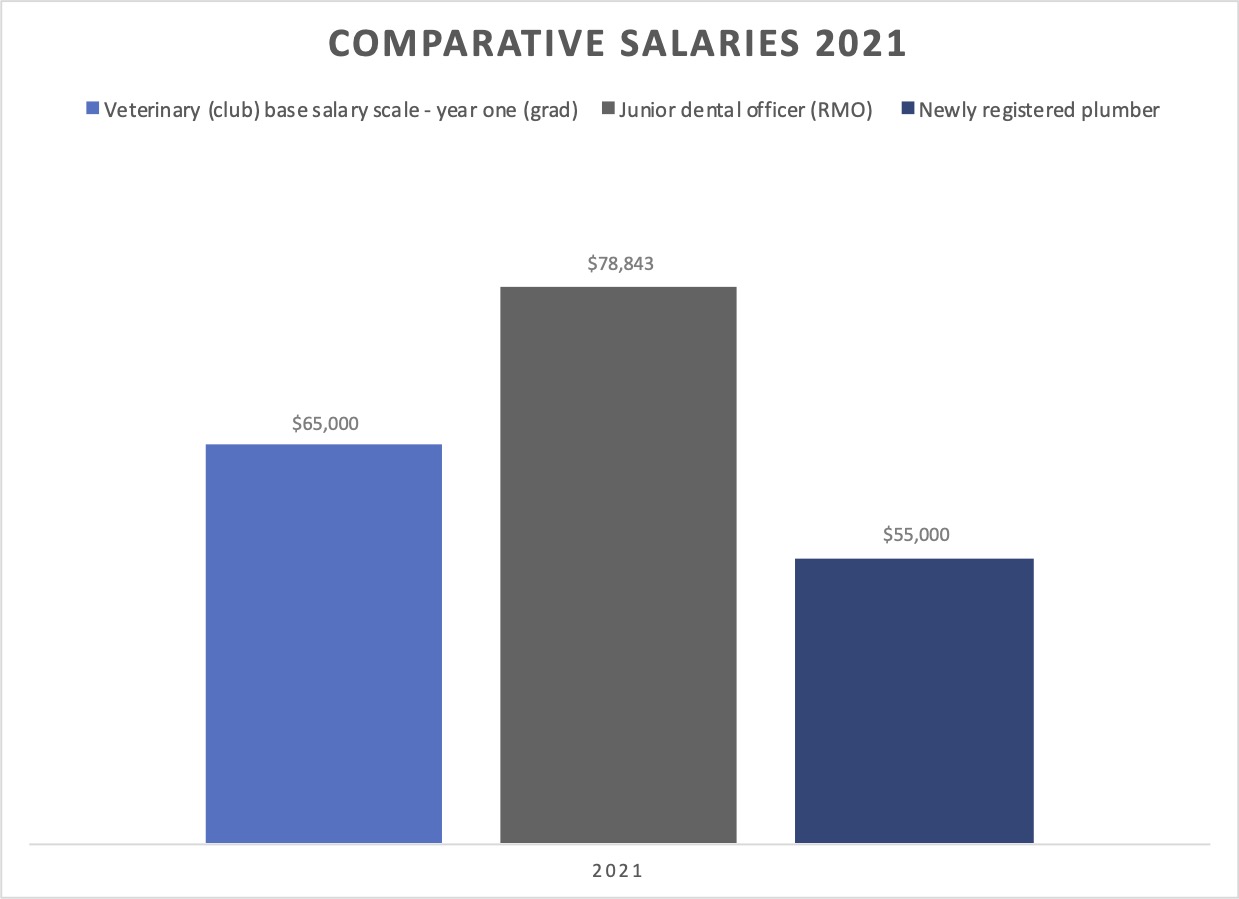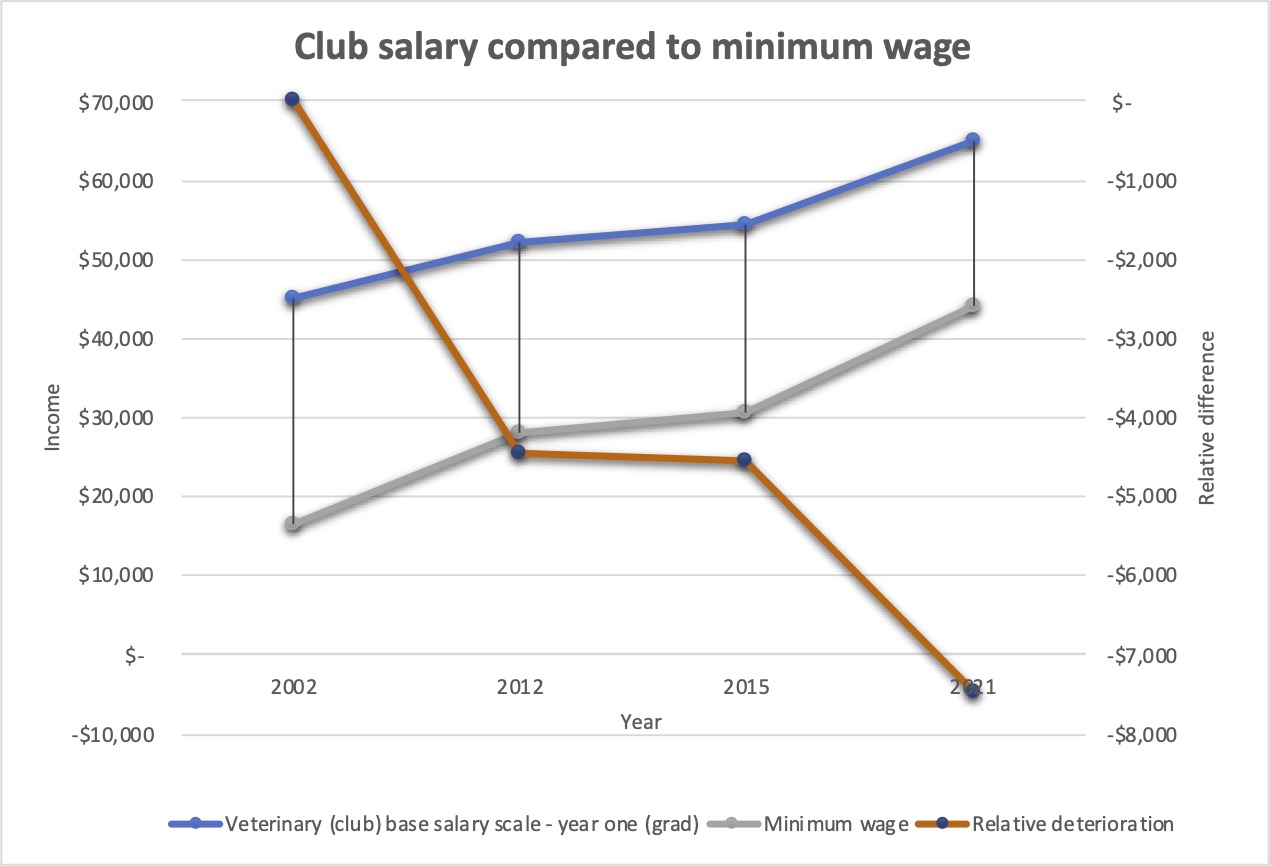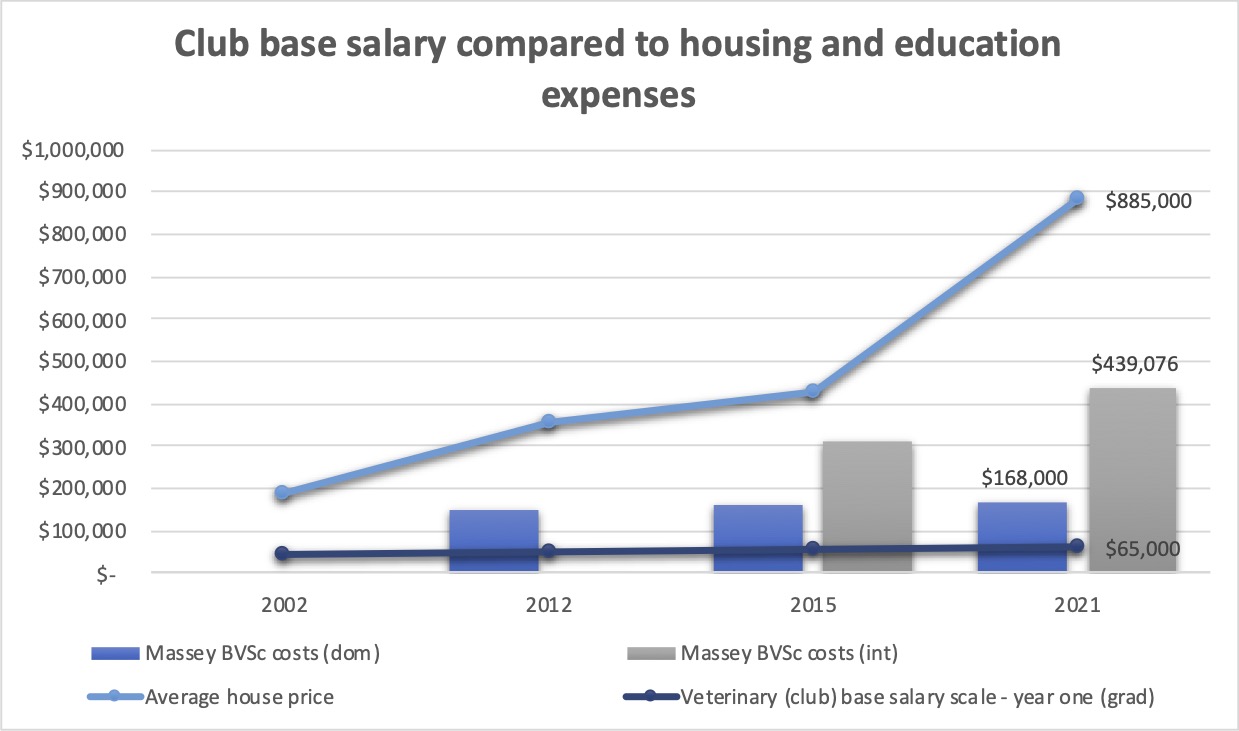Some comparisons
16 June 2022

The following is an expanded version of the article, titled “Go Figure”, written by our Professional Advisor in the latest VetScript.
We have an opportunity to reflect on how our profession compares with other sectors in relation to salary and employment conditions.
I have included some astonishing graphs in this article. Graph 1 shows the published data for the ‘graduate’ salaries of three professions – veterinarians, junior dental officers and newly registered plumbers at ‘day one’. The dental officer salary is included because it appears to be the closest equivalent in human healthcare to a veterinarian at the time of graduation.
GRAPH 1. Comparative salaries 2021

The veterinary (club) base salary scale – year 1 (grade 1) represents the Association of Rural Practitioners’ starting salary for graduate veterinarians. This salary package appears to include on-call (1:6) and call-out duties, statutory leave provisions (four weeks’ annual leave; two weeks’ sick leave), the minimum Kiwisaver contribution (3%) and a CPD allowance. (Some employers already provide more generous benefits, such as vehicle usage, relocation allowance and time in lieu for on call work).
In simplified terms the remuneration package for Junior Dental Officers (from graduation - employed prior to 17 May 2021 - Non-Urban scales) includes:
- Salary (45-49.9 hours per week) is $78,843
- Additional duties: Where they are required to work additional duties to cover absences from the roster, the hourly rates are:
- 8am–10pm $60
- 10pm-8am $80
- On-call: an on-call allowance of $8.00 per hour in addition to other remuneration. Public Holiday the rate is $10.00 per hour
- Call-backs: paid for a minimum of three hours, or for working and travelling time, whichever is greater
- Telephone Advice When On-call: Where an employee is rostered on an on-call roster and receives a work-related telephone consultation where the issue of patient care can be resolved over the telephone, and that does not result in a call back, they shall be entitled to payment for a minimum one-hour period at the appropriate additional duty rate
- Annual leave: 30 days per annum (statutory annual leave provision is twenty days)
- Sick leave: 30 working days per annum (statutory sick leave provision ten days)
- Employer superannuation contribution: Up to a maximum of 6% (minimum contribution is 3%)
- CPD:
- 2 hours Protected Training Time per week.
- All employees in their second and subsequent years of service shall be entitled to five days CPD leave
- First appointment removal costs
- fifty percent of actual and reasonable travel costs
- expenses, during and on arrival at the new locations - may include accommodation and meal costs for up to eight days
- fifty percent of the cost of removal of furniture and effects
GRAPH 2. Club scale salary for a year 1 graduate compared to the minimum wage:
This table shows the relative difference between the Veterinary (club) base scale salary for a year 1 graduate and the minimum wage between 2002 and 2021 with almost an $8k comparative deterioration.

Graph 3 compares the year-one veterinary graduate salary with education, housing and living costs.
The data on the cost of education estimates the tuition and living costs for a five-year period for both domestic and international Massey students. For example, in 2021 the estimated cost of a BVSc was $168,000 for a domestic graduate and $439,000 for an international graduate, and the average house price was $885,000. Their salary on this scale would have been $65,000.

And an interesting comment from Tony Alexander recently “What we need in our country is a reallocation of people to higher-paying, higher profit jobs. That requires that the inefficient firms unable to pay decent wages to go out of business,”
Taken together, these graphs make interesting reading. While I’m sure you can draw your own conclusions, the solution is a little more complex.
Sources: